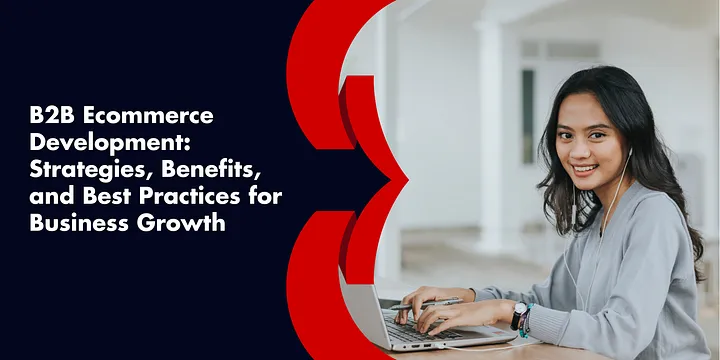B2B Ecommerce Development: Strategies, Benefits, and Best Practices for Business Growth
- ds4useodigital
- Dec 12, 2024
- 3 min read
In today’s digital age, businesses are transitioning from traditional sales models to online platforms, paving the way for significant growth and efficiency. B2B ecommerce development refers to the creation and optimization of online systems where businesses sell products or services directly to other businesses. With the rising demand for seamless online transactions, having a robust B2B ecommerce platform is essential for companies looking to stay competitive and grow their customer base.
This article explores the key aspects of B2B ecommerce development, including its benefits, features, and actionable strategies for building a successful platform.

What Is B2B Ecommerce Development?
B2B ecommerce development involves designing and building online platforms tailored to business-to-business transactions. Unlike B2C (business-to-consumer) platforms, B2B ecommerce platforms cater to organizations with unique requirements such as bulk orders, customized pricing, and complex payment terms.
For example, a manufacturer may use a B2B ecommerce site to sell raw materials to wholesalers, or a software provider may offer subscription-based tools to enterprises.
Why Your Business Needs B2B Ecommerce Development
The B2B ecommerce market is booming, with projections showing continuous growth in the coming years. Here are some reasons why developing a B2B ecommerce platform is crucial:
1. Streamlined Purchasing Process
Online platforms make it easier for businesses to place orders, track shipments, and manage invoices.
2. Improved Efficiency with Automation
Automation reduces manual errors, speeds up processes, and lowers operational costs.
3. Enhanced Customer Experience
With features like real-time inventory updates, personalized dashboards, and tailored pricing, businesses can deliver a seamless experience to their clients.
Key Features of a Successful B2B Ecommerce Platform
To build a platform that meets the demands of modern B2B transactions, consider incorporating these features:
Custom Pricing and Discounts: Allow customers to see pricing based on their specific contracts.
Bulk Ordering Capabilities: Enable businesses to purchase large quantities effortlessly.
Integration with ERP and CRM Systems: Ensure smooth data exchange between ecommerce and internal systems for better efficiency.
Advanced Search and Filtering Options: Help users quickly find products based on their specifications.
Steps to Develop a B2B ecommerce Platform
Here’s a step-by-step guide to creating a successful B2B ecommerce platform:
Step 1: Define Your Goals and Audience
Identify your target customers and understand their pain points.
Set clear business objectives, such as increasing sales or improving customer retention.
Step 2: Choose the Right Platform
Select an ecommerce solution like Shopify, Magento, or BigCommerce based on your business needs.
Step 3: Prioritize Scalability
Build a platform that can handle increasing traffic and transactions as your business grows.
Step 4: Integrate Essential Tools
Include CRM, ERP, and marketing automation tools to streamline operations and provide a better customer experience.
Step 5: Test and Launch
Conduct rigorous testing to ensure the platform is user-friendly, secure, and fully functional.
Best Practices for B2B Ecommerce Success
To maximize the impact of your B2B ecommerce platform, implement these best practices:
Personalize the Buyer’s Journey: Use data analytics to understand customer behavior and offer tailored recommendations.
Offer Multi-Channel Experiences: Ensure consistency across web, mobile, and other sales channels.
Focus on User Experience (UX): Simplify navigation and design intuitive interfaces to make the purchasing process effortless.
Future Trends in B2B Ecommerce
Stay ahead by preparing for these emerging trends:
AI-Powered Personalization: Use AI tools to analyze customer behavior and provide targeted recommendations.
Voice and Visual Search: Enhance your platform with voice commands and image recognition for product searches.
Blockchain for Secure Transactions: Ensure transparency and security in payment processing using blockchain technology.
Subscription-Based Models: Offer subscription plans to secure recurring revenue streams.
View Original Source: B2B Ecommerce Development: Strategies, Benefits, and Best Practices for Business Growth








Comments